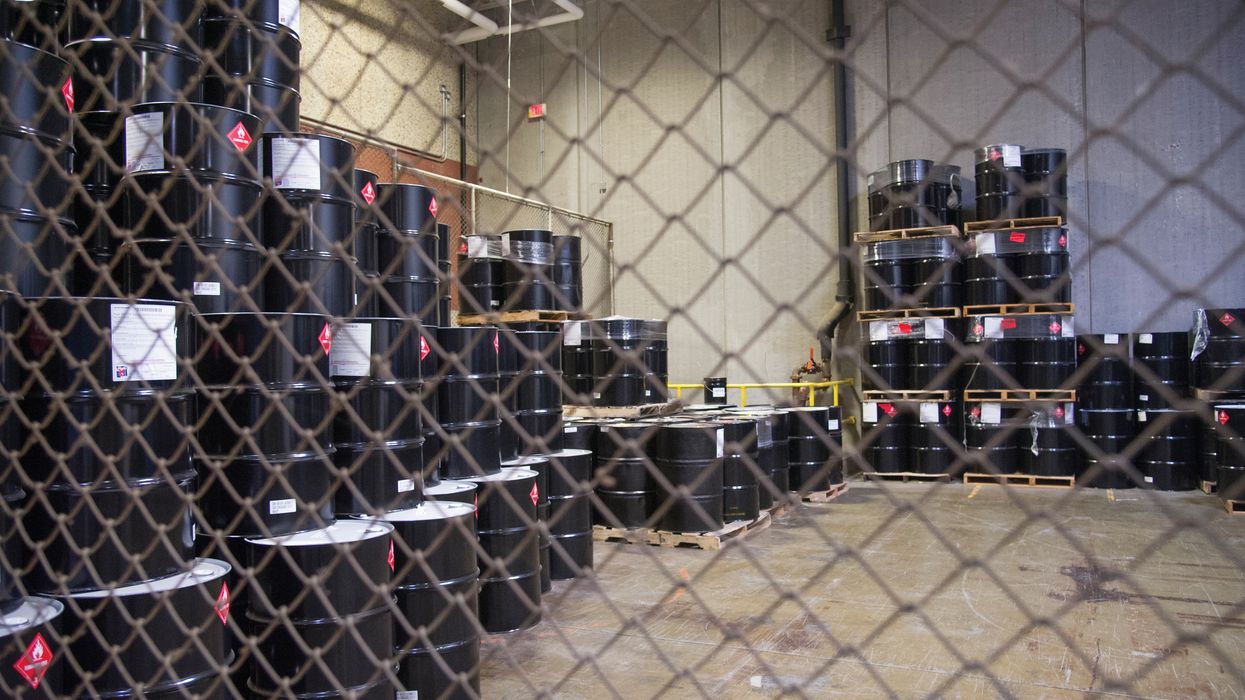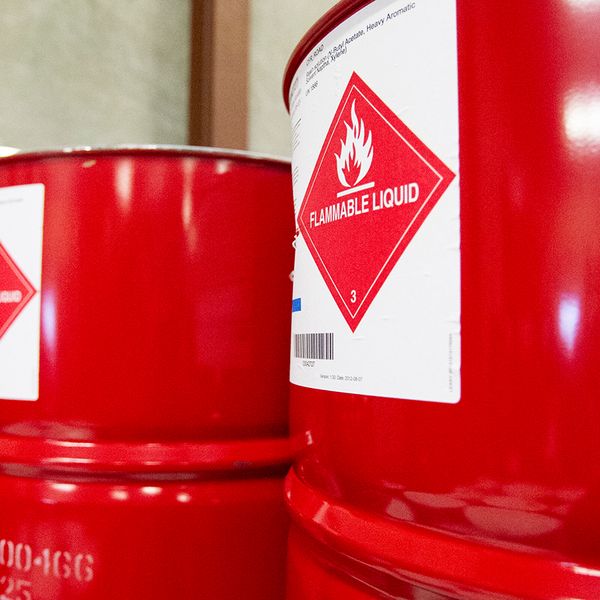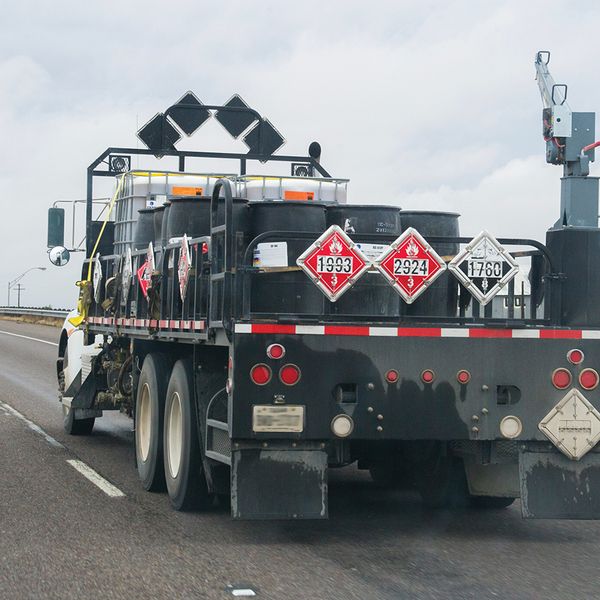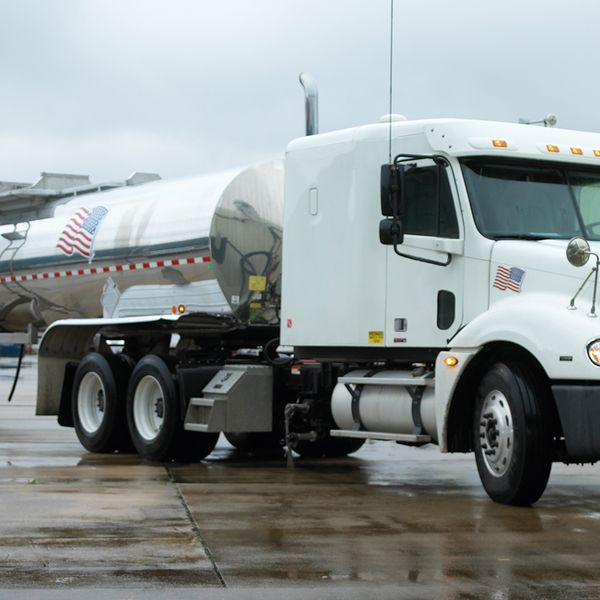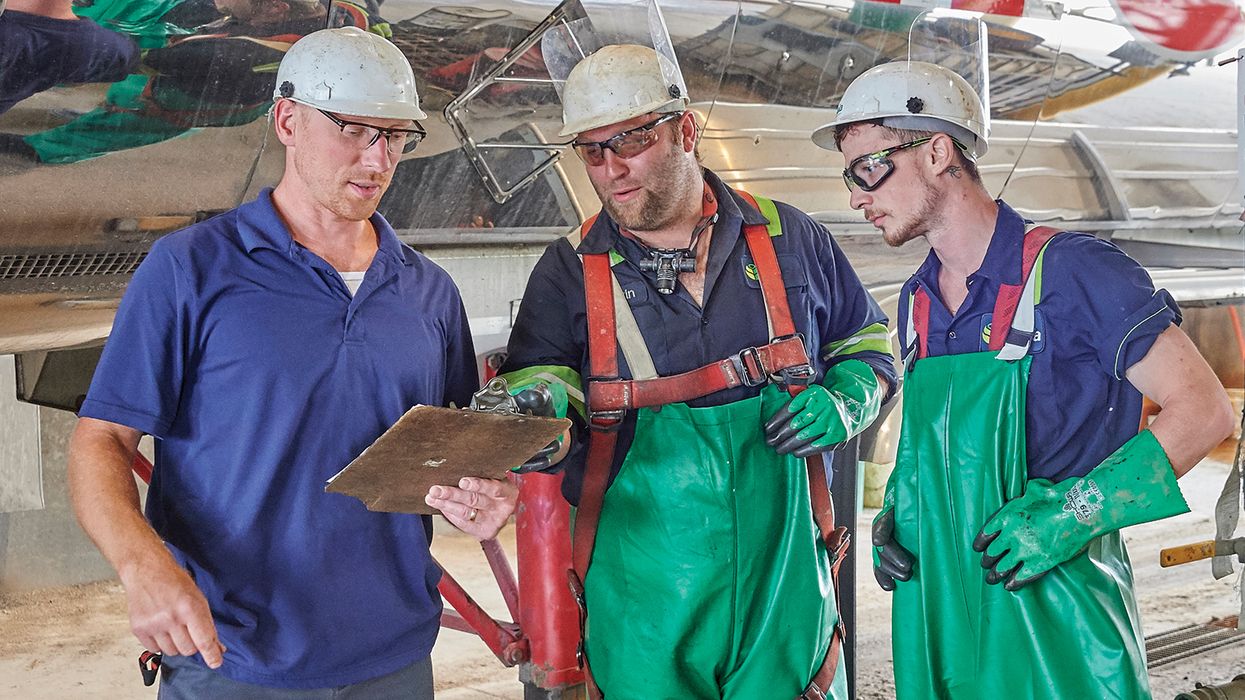Handle and store flammable liquids safely
Flammable liquids can be a fire and explosion hazard when used or stored at a facility. They’re found in maintenance shops, boiler rooms, and manufacturing and warehouse floors. Their uses are nearly unlimited between being used as cleaners and solvents in the work processes and fuel for the building and equipment. However, flammable liquids are often used by employees lacking basic awareness level training and the necessary precautions to protect themselves and company property.
Consider this fatal accident from 2020 at a wastewater company. A 22-year-old employee was working to clean up a flammable oil leak on the roof. Other coworkers from another department used a reciprocating saw and an angular hand grinder to remove a stubborn component from a heater nearby.
The sparks from the heater repair ignited the flammable oil, and the employee cleaning was engulfed by the flames, where he then fell off the roof. In this case, OSHA cited the employer under 1910.106(b)(6), Flammable Liquids, for failure to take precautions against ignition sources when flammable vapors were present. When taking a deeper look into this fatality, there appears to be a failure in communication and awareness of the situation.
Would the outcome have been different had the cleaning employee asked the other workers to wait until he was done? What would have happened if the employee on the roof waited until the other workers were done? Finally, would the outcome have been different if a fire extinguisher was present?
Flammable liquids are found in and around facilities, both indoors and outdoors. On all sides of the facility, there are gas lines and tanks supplying boilers and equipment. Flammable liquids are often kept in consumer-size bottles in industrial quantities, and if not stored correctly, vapors can build up to ignitable levels.
If these are ignited, the outcomes of accidents involving flammable liquids are not usually small in scale. They can lead to massive fires and explosions with extensive property damage, employee injuries, and loss of life.
Accidents involving flammable liquids are often not due to the actions of the employee working directly with the hazard. Instead, the accident occurs when another worker is unaware of the task being done using the flammable liquid and its hazards. Employers often emphasize hazard awareness training for high-risk jobs, such as welding, due to the potential harm if there was a mistake in the process. Welders are trained to remove combustible materials, protect flammable liquids, have a fire extinguisher on hand, and keep other employees out of the work area. Yet employees and contractors working around the hazard often have no idea how their actions can impact those same hazards.
In addition to training employees about how to safely store and handle flammable liquids, it’s vital to also train all employees to:
- Recognize hazards (such as signs of a gas leak).
- Report and act as soon as problems are noticed.
- Communicate when they’re using flammable liquids and when they may create a source of ignition.
- Recognize when and how to use a fire extinguisher.
- Read the safety data sheets of chemicals to check if they’re flammable.
As employers, it’s your responsibility to maintain the building and equipment, continuously enforce safe work practices, and make sure that all employees who could contribute to a flammable liquid incident understand the hazards and how to prevent them.

